Matador Network's Blog, page 788
September 10, 2020
New observation deck Italy
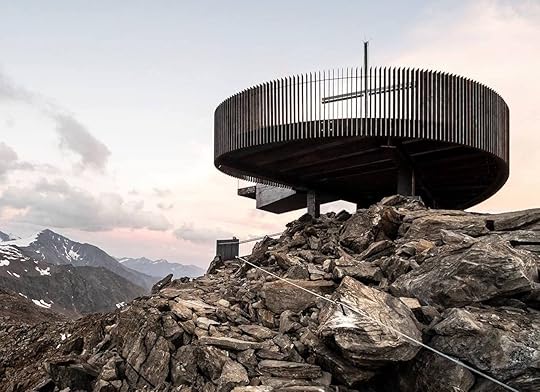
Views from peak summits in the Alps used to be reserved for serious hikers who braved intense climbs, but now, all you have to do is hop on a cable car and enjoy the vistas from this futuristic observation deck. Iceman Ötzi Peak is a new observation platform in the Italian Alps, located 10,666 feet above sea level, and it even appears to float above the peak.

Photo: AlexFilz/noa*/Facebook
Designed by architecture studio NOA, the platform was built with vertical steel slats that allow visitors to get close to the edge for completely unobstructed views. The only glass-enclosed area extends out from the platform, and marks the spot where the world’s oldest ice mummy, named Ötzi the Iceman, was discovered in 1991. The platform is supported only by a few beams underneath, giving guests the feeling that they’re floating above the mountains.
From the platform, you’ll be treated to a stunning view of the snowfield of the Similaun where the mummy was discovered. You’ll also have clear views of the Giogo Alto Glacier and the watershed that forms the border between Italy and Austria, and the historic path of Transhumance.
To reach the observation deck, all you have to do is take the cable car from Maso Corto to the mountain station and the Glacier Hotel Grawand. From there, a new staircase will bring you up to the viewing platform. 
More like thisArt + ArchitectureThese American observation decks have all the views, and none of the tourists
The post This new, super high observation deck has the most spectacular views of the Italian Alps appeared first on Matador Network.
California wildfires turn the sky
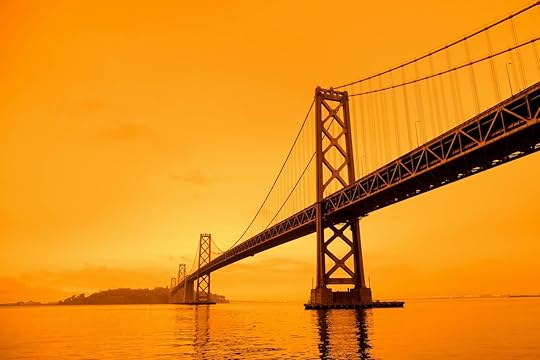
In California and much of the American West in the past few years, late summer has become fire season. And of course, because it’s 2020, this year’s fire season has been particularly devastating. Wildfires have broken out in multiple states, devastating homes, polluting the air, and giving the sky an eerie dark orange hue. Fires have broken out in Oregon, Washington, and most notably California, where blazes have already burned around 3 million acres — shattering the previous record of 1.7 million acres set in 2018.
In California, 2.9 million acres have been burned thus far, compared to the 270,000 acres burned last year, which was devastating enough. In Washington, 350,000 acres were burned in a 24-hour period earlier this month, and Oregon’s governor called the wildfires potentially “the greatest loss of human lives and property due to wildfire in our state’s history.”
In dry areas, a lack of rain and soil moisture can facilitate the growth of small fires, which is even further exacerbated by high temperatures and strong winds. The Climate Council has suggested that the threat of wildfires is greater than in previous years due to climate change, with drier soils, more drought, and hotter temperatures. A number of catalysts can lead to wildfires, however, and this year the blazes were precipitated by a lightning storm.
The fires have been particularly destructive in the Bay Area, where Matador Network headquarters is located. The smoke turned the sky dark and orange, making it almost impossible to tell what time of day it was. While many photos are circulating on social media, the following otherworldly pictures were taken by some local friends, and show just how badly the fires have affected the San Francisco sky.
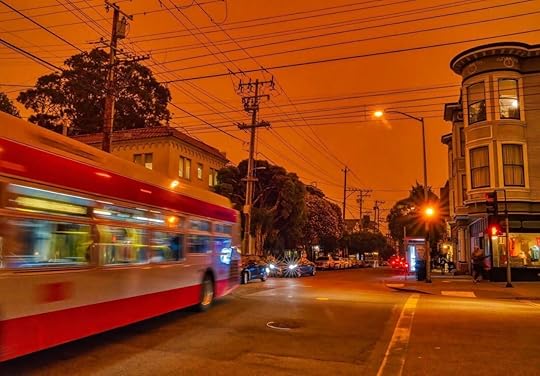
Photo: Tom Stahl
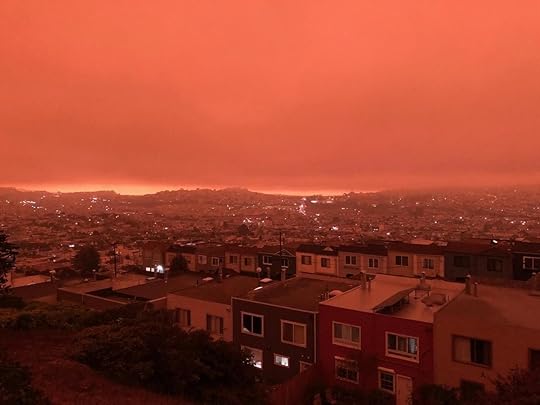
Photo: Tom Stahl
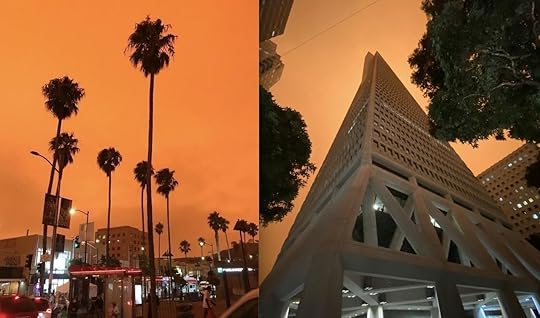
Photo: Tom Stahl/Mike Dodson
To help those affected by the fires, you can donate to the American Red Cross disaster relief and recovery fund, which supports evacuation centers and recovery programs; the Salvation Army, which assists victims with food and water; or the United Way Bay Area, which offers long-term recovery assistance. 
More like thisNewsCalifornia’s oldest state park has been devastated by wildfire
The post Wildfires are tearing across the West and turning the skies a terrifying shade of orange appeared first on Matador Network.
US airports no longer screening

Since March, travelers coming to the US from overseas were required to enter through one of 15 designated “screening airports,” where they would be screened for COVID-19. Now those health screenings are being terminated. Starting on September 14, international flights will no longer be rerouted through one of those 15 airports, and overseas arrivals won’t be required to undergo health screening measures, Yahoo News reported.
According to the CDC, currently, all passengers coming from China (excluding the Special Administrative Regions of Hong Kong and Macau), Iran, the Schengen region of Europe, the United Kingdom, Ireland, and Brazil are required to enter through a screening airport, where passengers are asked about their medical history and current health condition. Their contact information is also taken for contact tracing purposes. Up until last month, all passengers would then have to self-quarantine for 14 days; the CDC no longer requires it.
According to CNN, the rule change was implemented by the White House reportedly because of the 675,000 passengers screened over the past six months, fewer than 15 were found to have COVID-19. 
More like thisTravelThe days of US passport dominance may be over
The post The US will no longer be screening international arrivals for COVID-19 at airports appeared first on Matador Network.
Morocco is reopening to tourism

Like many countries, Morocco is eager to reopen its borders to tourism, but it’s taking a phased approach to doing so. Starting this week, the country is reopening its borders to business travelers and tourists from 67 visa-exempt countries who have confirmed hotel reservations. These countries include the US, UK, Canada, Australia, and New Zealand. It’s likely that there will be additional entry requirements, though nothing else has been announced yet.
In a recent tweet, Royal Air Maroc said, “Nationals of visa-exempt countries with an invitation from a Moroccan company or a confirmed hotel reservation can now have access to our flights to Morocco. All foreign visitors must comply with the health measures issued by the Moroccan authorities, in particular the obligation to carry out the required tests for COVID-19.”
All foreign visitors must comply with the health measures issued by the Moroccan authorities, in particular the obligation to carry out the required tests for COVID-19.
— Royal Air Maroc (@RAM_Maroc) September 6, 2020
In March, Morocco imposed some of the strictest travel restrictions in the world, closing all land, air, and sea borders. 
More like thisHikingHow to explore Morocco’s mystical Atlas Mountains on foot
The post Morocco is reopening to travelers from 67 countries, including the US appeared first on Matador Network.
The best B&Bs in Vermont for fall

Famous for its stunning fall foliage, Vermont is arguably the coziest place in the United States to be while the seasons change and the leaves turn before your eyes. Picturesque sleepy towns, cider, plenty of local cheese, and genuine hospitality are a few of the elements that bring the Green Mountain State up to the top of travelers’ bucket lists.
Vermont B&Bs take hospitality and luxury to the next level, offering individually-decorated rooms and suites with lots of character that feature antique furniture, maple and mahogany floors, and gorgeous balcony views. Here, you can explore historic Victorian-style inns with decades of tradition and cuddle up in front of your en-suite fireplace. Whether you’d like to go on a romantic getaway or just disconnect and immerse yourself in nature, these six Vermont B&Bs will pamper you to oblivion.
1. Rabbit Hill Inn

Photo: Rabbit Hill Inn
This charming inn in Lower Waterford has a long history dating back to the early 1800s. Run by a local family dedicated to treating guests like their very own, here you can experience the best of the Green Mountain State’s stunning views and cozy ambience. Perfect for a romantic getaway, Rabbit Hill Inn offers a honeymoon and romance package that spoils guests with Champagne and an elaborate three-course dinner. If you want to escape the city and disconnect, you can go for the outdoors and adventure package that includes zip lining, a guided ATV tour, a picnic, biking, “lazy river” paddling, and even a snowmobile tour in the winter.
The inn has four, uniquely-decorated standard rooms featuring pine floors and queen-sized beds. You can also choose one of the seven superior rooms, equipped with chic sofas, large mirrors, and spacious private bathrooms. If you really want to splurge, the inn has eight luxury rooms that are decorated with antique furniture and offer extra space and privacy. Each room has its own decor theme, ranging from coffee and cream tones to cranberry and gold.
Price: Starts at $226 per night
2. Jackson House

Photo: Jackson House
One of Vermont’s best-established luxury inns, Jackson House was built in 1890 as a private residence. Designed and decorated in traditional Victorian style, this bed and breakfast was added to the National Register of Historic Places in 1993.
The inn has masterfully crafted woodwork that includes floors made of maple, cherry, and oak, as well as magnificent stained-glass windows. You can book one of six suites, each featuring a fireplace, HDTV, Wi-Fi, and en-suite bathrooms. Four of the suites are located in the porch wing and two have balcony views, looking out to the sprawling meadows.
There’s also an extensive restaurant menu celebrating local produce. At breakfast, you can look forward to organic yogurt with honey, pear almond Challah toast, and a cheese board featuring the best of the region.
Price: Starts at $249 per night
3. Barrows House

Photo: Barrows House/Facebook
Barrows House offers accommodation for every occasion and travel style. You can stay at one of the main inn’s eight rooms, such as the Owl’s View that features a front sun porch, pine floors, a walk-in shower, and a large jetted tub. A typical room here includes a king or a queen bed, an air conditioner, a wood-burning fireplace, a sleeper sofa, a leather wingback chair, and a writing desk.
If you’re traveling with a group and would like extra space, rent one of the five guest houses such as the Seven Springs House, which is equipped with two queen-sized beds, two kings, and one single bed. Here you’ll find five bedrooms, five full bathrooms and one half-bath, an outdoor patio just for your house, and a stone fireplace.
While at Barrows House, you can treat yourself to a decadent meal at the on-site restaurant. One of the popular dishes on the menu include the wild bill smoked brisket sandwich with local Cabot cheddar cheese, fried egg, zesty aioli, bourbon BBQ sauce, onion rings, and arugula.
Price: Starts at $249 per night
4. Four Chimneys

Photo: Four Chimneys
A charming mix between a traditional Vermont inn and an elegant hotel, Four Chimneys has a delightfully nostalgic feel to it. It has 11 uniquely-decorated rooms, each with its own character and the innkeepers are more than happy to find you the perfect fit based on your style and preferences.
Four Chimneys offers a mix of cozy bedrooms with garden and Mount Anthony views. The second-floor Deluxe King features a king-sized bed, a jetted tub, hardwood floors, and a gas fireplace. The Estate King room is equipped with a two-person marble shower and the ground-floor Ice House has a chic interior and two levels connected by a winding wooden staircase.
Price: Starts at $329 per night
5. The Village Inn of Woodstock

Photo: Village Inn of Woodstock
The Village Inn is one of Vermont’s oldest historic B&Bs. Located in the quiet village of Woodstock, guests have a chance to relax and enjoy the quaint local area that is full of independent art galleries, boutique shops, restaurants, and cafes.
The rooms at the inn will make you feel right at home. There are four suites and four standard rooms, some of which feature spa tubs, fireplaces, and thoughtful details such as Turkish cotton towels and luxury Italian bath products.
The inn is committed to sustainability and all recyclable materials are properly disposed of. Water and electricity are highly-optimized so that the B&B can minimize its impact on the environment.
Perhaps the best way to explore the area is to arrive by car. The inn’s spacious parking lot offers plenty of flexibility to leave your vehicle and explore. You can venture out to Barnard, Hanover, Quechee, Bridgewater, Killington, and the White River Junction for a quintessential Vermont trip.
Price: Starts at $169 per night
6. Timberholm Inn

Photo: Timberholm Inn
This classic Vermont inn is tucked into the quiet hillside of Stowe, with gorgeous views of the Worcester Mountain Range. There are nine rooms in total as well as a sprawling lawn and an outdoor hot tub. Each of the rooms are equipped with the necessary amenities to make your stay as comfortable as possible. You’ll find luxury toiletries, fluffy towels, and bathrobes, as well as noise machines to help you sleep.
The inn lies steps away from the local farmers market and a number of hiking trails. You’ll be able to easily venture out and explore your surroundings, including tasting gourmet truffles at the Lake Champlain Chocolates shop and sipping on a cup of premium coffee at the Vermont Artisan Coffee & Tea Co. This is the perfect spot for those who prefer to spend most of their time outdoors and return to a cozy lodging at the end of a long day.
Price: Starts at $159 per night 
More like thisFood + DrinkFor the best fall food in the US, make your way to Vermont
The post The most idyllic Vermont B&Bs for a fall getaway appeared first on Matador Network.
Major rum producing countries
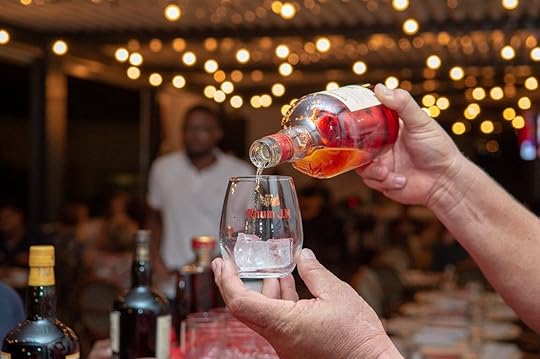
Rum can be many things. To some, it’s a clear and nearly tasteless spirit best used in cocktails. To others, it’s deep, intense, and should be sipped and savored, not shot or mixed. Others still think of a liquor that’s spiced, sweetened, or both. When it comes to rum, the styles and flavors are as varied as the many places that make it.
Many of the most famous rums in the world are made in the Caribbean. Sugarcane was introduced to that part of the globe in the late 1400s by Europeans, and it quickly took root. Colonialists started sugar plantations that used forced labor from enslaved people from Africa, and from these sugar plantations came rum.
A few islands and countries in Central and South America became famous for rum, while others remain relatively obscure without a truly defined style. The latter aren’t bad (Paranubes from Mexico, for example, is always worth sipping), but the most well-known rum producing regions reliably put out distinctive spirits that taste of the place they’re made.
The most notable rums are generally split into three styles: Spanish, English, and French. The first two are typically made from the molasses leftover from refining sugar, with English rums known for long fermentation times and funky notes and Spanish rums known for quicker fermentations and a more neutral taste. French style rums (or rhum agricole) commonly use fresh pressed sugarcane juice that results in a vegetal spirit that’s heavily influenced by the terroir of where the sugarcane was grown.
There’s a wide world of rum to sample using these three broad stroke styles as a jumping off point. These are the countries to sample rums from in order to understand all that the spirit can be.
1. Barbados

Photo: Velour Noire/Shutterstock
According to the most popular rum origin theory, Barbados is the original home of the spirit. Enslaved people were likely the first to ferment and then distill molasses to produce what would become known as rum. Rum has been distilled since at least the 1640s in Barbados by some accounts, and Mount Gay, which opened in 1703, is believed to be the first rum distillery. The spirit took off among islanders and the ever-present British Navy throughout the era of English colonial rule. Barbados was a prominent place on one corner of what’s known as the triangle trade of enslaved people, molasses, and rum during this time. Today, the island country maintains a strong connection to rum.
Rums from Barbados are known for being a perfectly balanced blend of pot and column distilled spirits that are aged to highlight both the flavors from the barrel and those from the sugarcane itself.
Rums to try: The Real McCoy 5 Year, anything from Foursquare Rum Distillery, and Mount Gay XO
2. Cuba
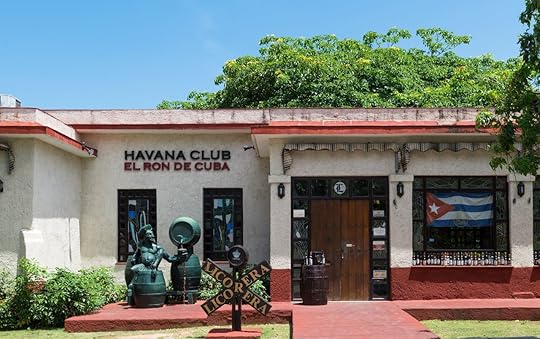
Photo: possohh/Shutterstock
Few countries are as famous for rum as Cuba. During Prohibition, the island was one of the most popular escapes for thirsty Americans. Imported Cuban rum continued to be popular in the United States up until Cold War trade restrictions in the 1960s. Unfortunately, those strict stateside limitations largely continue today, though Cuban rum is easy to find abroad.
Cuban rums are typically made from molasses from sugarcane grown on the island. The distilleries make Spanish style rum that’s dry and aged for at least two years in oak barrels before being charcoal filtered. The result are light, easy drinking white rums that seamlessly blend into cocktails like the daiquiris that Ernest Hemingway made so famous, as well as longer aged rums ideal for sipping neat or over a single ice cube.
Rums to try: Havana Club 3 Años, Ron Santiago de Cuba Extra Anejo, and Havana Club Especial
3. Haiti

Photo: Clairin The Spirit of Haiti/Facebook
Haitian rum is far from commercial. Rum production here started with French colonization when Haiti grew a large chunk of the sugar consumed in Europe. Haiti became independent in 1804, and large sugar plantations were destroyed. Small local farms continued to grow sugarcane and distill at home, however, and today, more than 500 small producers are scattered across the country, each using various local varieties of sugarcane that’s grown and harvested naturally before being distilled in small pot stills. These distinct sugarcane spirits are called clairin, and can be hard to find outside of Haiti.
The diverse range of sugarcane is pressed and the fresh sugarcane juice is fermented with wild yeast. This gives each clairin a local flavor, or terroir, that’s unlike any other rum in the world.
Rums to try: Boukman Spiced Rhum and Clairin Casimir
4. Jamaica

Photo: Rostasedlacek/Shutterstock
Jamaica is one of the most famous rum producing countries in the world. In the early 1900s, there were nearly 150 distilleries here, but today only four are in full operation: Appleton Estate, Hampden Estate, Worth Park Estate, and National Rums of Jamaica. Still, rum experiences are some of the most exciting things to do on the island for lovers of fine food and fine drink — especially at Appleton Estate high in the mountains.
Jamaican rum is characterized by what’s called “hogo,” which is a funky flavor that’s similar to overripe fruit in the best way possible. It comes from letting the molasses naturally ferment with wild yeast or dunder (the alcohol equivalent of a sourdough starter) and then distilling the liquid in pot stills rather than column stills. Many Jamaican rums are higher than the standard 40 percent ABV, making them great for rum-forward cocktails or sipping over ice.
Rums to try: Appleton Estate 8 Year Old Reserve, Hampden Estate 46, and Smith and Cross Traditional Jamaican Rum
5. Martinique
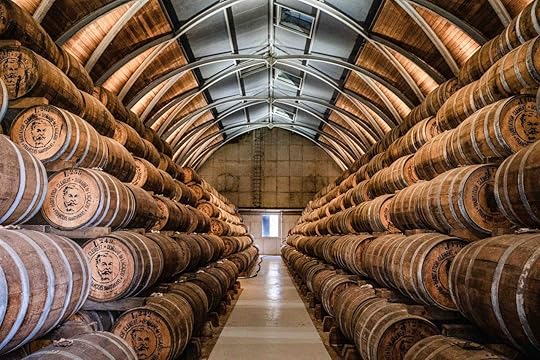
Photo: Rhum Clément/Facebook
Martinique, which is still a French territory, produces French style agricole rhum using fresh sugarcane juice. There are two sides to Martinique rum, says Kiowa Bryan, the national brand manager for Spiribam: those influenced by the Caribbean, and those influenced by the Atlantic. The Caribbean side is characterized by a calmer climate while the Atlantic has more aggressive winds that come off of the ocean. Even subtle differences in the climate can make an impact on the flavor of the rum, especially since Martinique rum is made according to the sun up to sun down tradition, meaning the sugarcane that’s cut when the sun first comes up must be pressed by sun down.
Spiced rums called shrubbs are also important on Martinique (not to be confused with vinegar-based shrubs). Ben Jones, the managing director of Spiribam, says many families have their own homemade spice blends, and most use oranges as a starting point. Shrubb is commonly made at home around the holidays, but some brands, like Rhum Clément, sell shrubb year-round. A strong spiced rum culture can also be found on nearby St. Lucia with bottlings like Chairman’s Spiced, which is made with a bark called bois bandé that’s said to be an aphrodisiac. On these islands, you’ll fall for the aged rums just as fast as you’ll change any assumptions you have about spiced rum.
Rums to try: Rhum Clément Cuvée Homère, Rhum J.M. V.S.O.P., and Rhum Clément Créole Shrubb
6. Philippines

Photo: Don Papa Rum/Facebook
The Philippines, and much of the world outside of the Caribbean for that matter, doesn’t get much attention for its rum. Nevertheless, Filipino rum is one to keep an eye on, as both mass production brands like Tanduay (one of the best-selling rums in the world) and craft brands exist in the country.
Filipino rum production started in the 1800s with Spanish colonization. The classic rum style is similar to rums from other former Spanish colonies like Cuba and Puerto Rico. Typical rums from the country are made with molasses from Filipino sugarcane that’s distilled in column stills. Some brands, like Don Papa, use a native Southeast Asian sugarcane variety called Cara Morada (or Nobel Cane). Aged rums from the Philippines are the ones to try, and are best sipped neat like you would a fine whiskey (and, in fact, many of these rums are aged in barrels that previously held whiskey).
Rums to try: Don Papa, Tanduay Rhum 5 Years, and Palawan Blanco
7. Puerto Rico

Photo: karenfoleyphotography/Shutterstock
Puerto Rican rum production began in the 17th century with Spanish colonization, but the story of modern Puerto Rican rum is forever tied to the story of Cuban rum. In 1960, when Fidel Castro nationalized Cuba’s rum industry, the Bacardi family was forced to leave the island. They went to nearby Puerto Rico to stay in the rum business, and today, Bacardi is one of the largest rum producers in the world. It’s filled the gap over the past half century for Spanish-style rum after the US banned Cuban imports, and a trademark battle between Cuba’s Havana Club and Bacardi’s Havana Club, which is reportedly made from the same recipe as the Cuban original, has raged for decades.
Though Bacardi is the most well-known Puerto Rican rum, it’s far from the only distillery. Puerto Rico makes around 70 percent of the rum sold in the US, and more than 80 individual rum labels are made on the island. All rums are aged for a minimum of one year in oak barrels, and every style from white rum to spiced rum is produced here. The combination of quantity and quality when it comes to the spirit led to Puerto Rico’s nickname of the Rum Capital of the World.
Rums to try: Ron del Barrillito 3 Stars, Bacardi Havana Club, and Don Q Reserva 7
8. United States
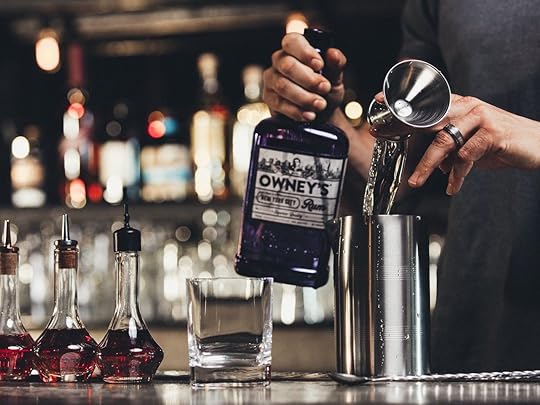
Photo: Owney’s Rum/Facebook
Before the US was a whiskey drinking country, it was a rum drinking country. It was also a major rum producing country due to its position in the triangle trade of enslaved people and sugar between Africa, the Caribbean, and the US. By the 1770s, distilleries, primarily in New England, were making some 5 million gallons of rum a year, according to The Atlantic. A number of factors, including taxes and trade disputes, weakened the rum industry by the 1800s, and Prohibition knocked out much of what was left of the New England rum distillers by the 1920s. Recently, however, there’s been a resurgence of distilleries producing, and in some cases focusing entirely on, rum.
Today’s US rum producers make a variety of styles, but the majority are molasses based. The white rums from US distillers is neutral tasting and easy to mix, while the spiced rums often capitalize on local flavors, like Bayou Rum’s use of Creole baking spices in its spiced rum distilled from Louisiana sugarcane. Many also lean on history. Owney’s Rum in New York City, for example, mixes locally made spirit with rum from the Dominican Republic as a throwback to the rum runners of the 1920s and ’30s. In Hawaii, distillers like Kō Hana Rum are reviving the island’s heirloom sugarcane varieties to create distinctive rums.
The craft distillery boom led to many homegrown rum distillers. According to the Rum Reader, there were around 250 US distilleries producing rum across the US in 2019.
Rums to try: Owney’s Rum, Bayou Reserve Rum, and Bully Boy Distillers Boston Rum 
More like thisSpirits + CocktailsThis rum distillery is helping Hawaii’s heirloom sugarcane thrive once again
The post 8 countries making the world’s best rum appeared first on Matador Network.
Paddling guide to Fort Myers
 We all have different feelings about traveling right now. When you’re ready, we hope you feel safe, inspired, and excited to join us on The Beaches of Fort Myers & Sanibel.
We all have different feelings about traveling right now. When you’re ready, we hope you feel safe, inspired, and excited to join us on The Beaches of Fort Myers & Sanibel.Kayaking, canoeing, and stand-up paddleboarding are year-round pursuits on The Beaches of Fort Myers & Sanibel. Did you catch that? 365 days a year. Southwest Florida’s access to the warm Gulf of Mexico and its bay waters, rivers, and creeks provide Discovery Channel-level scenery 24/7, whether you prefer open- or calm-water paddling, whether it’s your first time or your first time this week.
Below are the area’s best spots, some set in wide open bays, some enclosed in tunnels of spidery-y mangroves, some comprising saltwater lagoons and mazes of seagrass. Choose one and get started — here’s where, when, and how.
Note: Some of the businesses or organizations listed below may not currently be operating as described due to safety guidelines. Please contact all locations prior to visiting.
Buck Key, Captiva Island

Photo: The Beaches of Fort Myers & Sanibel
A short paddle from outfitters on Captiva Island, Buck Key has been preserved as a natural mangrove island with a canopy channel through its center. From its Hurricane Hole entrance, the paddling trail winds for around four miles and takes you deep into dense bird habitat, where bobcats have even been spotted at times. Buck Key Preserve itself is around two miles long, and its protected waters keep it cool in the summer and calm year-round. To soak in the scenery, you’ll want to go slowly here. Block out plenty of time to scout for manatees, bald eagles, herons, and stingrays.
STAY: On Captiva Island, the sprawling South Seas Island Resort lies near Buck Key and offers its own kayak rentals and tours. This is just one of the many perks you’ll find within the complex, which also includes a full-service marina, gorgeous 2.5-mile beach, golf course, water park, and restaurants.
J.N. “Ding” Darling National Wildlife Refuge, Sanibel Island

Photo: The Beaches of Fort Myers & Sanibel
The natural heartbeat of Sanibel Island, this birder’s dream spot — with some 245 species — has two kayaking launch points off the four-mile Wildlife Drive for exploring on your own. The entire refuge is an estuary, with mazes of seagrass beds, mangrove forests, and bayous to wander and explore.
If you’ve arrived sans gear, head to the Tarpon Bay Recreation Area, where the refuge’s concession rents kayaks, canoes, and stand-up paddleboards for navigating the bay, its rookeries, and the twisted backwaters of the offshoot Commodore Creek Trail. Keep your eyes and ears open: Hundreds of birds come to roost in the rookeries, and manatees may even glide beneath your paddlecraft.
STAY: Explore two options offered by Beach Cottages of Sanibel. Both Beachview Cottages and Castaway Beach & Bay Cottages provide a home-away-from-home that’s an easy drive to “Ding” Darling as well as just steps from the sand and warm waters. Choose Gulf-front or bay-side, a traditional guest room or a three-bedroom spread, and get to adventuring from your front door.
Causeway Islands Park, Sanibel Island

Photo: The Beaches of Fort Myers & Sanibel
A popular beach and total recreation hot spot, Causeway Islands Park features long stretches of sand running along both sides of the Sanibel Causeway bridge. In addition to its solid relaxation potential, the park is an ideal location for launching kayaks and paddleboards to explore Southwest Florida’s bay waters. And, since it’s so popular and easy to navigate, local outfitters can deliver kayaks and SUP boards to the causeway beach — straight to you — for your convenience.
STAY: West Wind Inn is one of the closest lodging options to “Ding” Darling as well as being a quick 15-minute drive from the causeway. But you might not want to venture too far from the 500 feet of beautiful private beachfront on the Gulf. Each guestroom and studio features a private, enclosed balcony or patio, and there’s a renowned restaurant and pool bar to further seal the deal.
Pine Island Sound

Photo: The Beaches of Fort Myers & Sanibel
Avid paddlers will find much to explore in the open waters of the Pine Island Sound, a designated state aquatic preserve. You can launch your paddlecraft from a number of access points on Captiva or Pine Island — the paddle from Bokeelia to Cayo Costa State Park, for experienced kayakers, makes an especially good day trip.
A sprinkling of rookery and other federally protected, undeveloped barrier islands turn this into an undeniable wildlife safari. With mangrove-lined shores, navigable creeks, and saltwater lagoons, don’t be surprised if it feels like the water’s all yours.
STAY: Especially great for long-term island stays, Sanibel Captiva Island Vacation Rentals can also accommodate shorter vacations for families and paddling groups of any size with a vast inventory of condos and homes. With options convenient to many of the areas listed in this article, you can stay at one spot or sample several during your paddling getaway.
Great Calusa Blueway
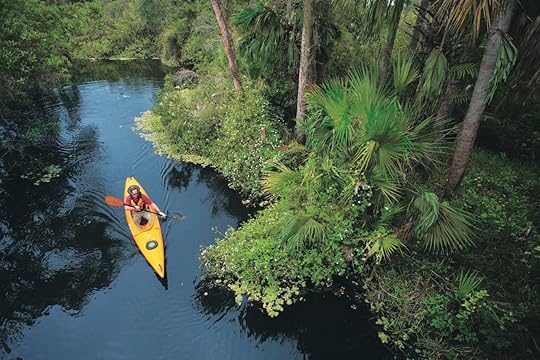
Photo: The Beaches of Fort Myers & Sanibel
Stretching throughout The Beaches of Fort Myers & Sanibel, the Great Calusa Blueway comprises paddling courses for serious kayakers seeking long-term adventure. Maps — available online — chart waypoints along the 190-mile trail, from Imperial and Estero Rivers in the south, through Fort Myers Beach’s Estero Bay Aquatic Preserve, around Sanibel and Pine Islands, and up the Caloosahatchee River and its tributaries. They mark GPS headings for places to launch, rent kayaks, visit, refuel, and camp along the way.
STAY: Treat yourself to a little luxury and beachside relaxation before or after you set out on a Blueway paddle. The Inns of Sanibel include four boutique accommodations, each offering a unique experience. Whether you’re after a family-friendly spot that’s all about nature, a stress-free retreat to catch incredible sunset views, bright and cozy cottages and guestrooms full of charm, or a setting perfect for intimacy and romance, there’s a Sanibel Island property that’s right for you.
San Carlos Bay – Bunche Beach Preserve, Fort Myers
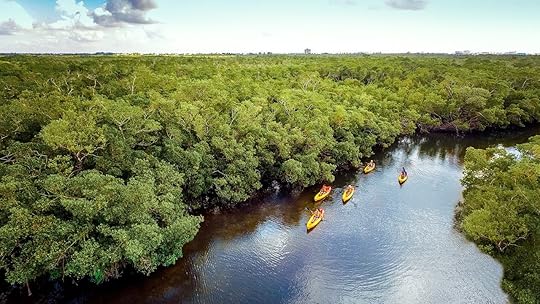
Photo: The Beaches of Fort Myers & Sanibel
An important site on the Great Florida Birding Trail, this shoreline preserve draws bird-lovers — especially at low tide and sunset — and fans of both kayaking and SUP. Two launches and a facility that rents paddlecraft and offers lessons and tours make this a great spot for low-impact recreation among its beach, mangrove, and salt flat habitats. Expect nighthawks, bald eagles, caracaras, cuckoos, and the beautiful painted bunting to keep you company.
STAY: On nearby Sanibel Island, Sundial Beach Resort & Spa provides full-service accommodations in units from studios to three-bedroom condos. Use of kayaks and paddleboards onsite is complimentary, plus it’s known for its pickleball, beautiful white-sand beach, and nature programs.
Koreshan State Park, Estero
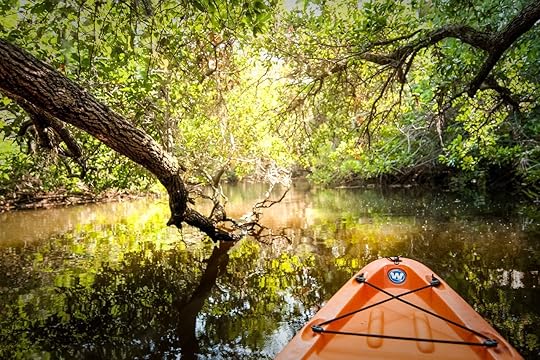
Photo: The Beaches of Fort Myers & Sanibel
Located right on the Estero River, Koreshan State Park can get you started on a soft adventure back in time. The 6.4-mile river flows through the park, a historic settlement with gorgeous gardens and a fascinating past.
The river empties into protected Estero Bay, where you can paddle to Mound Key Archaeological State Park, accessible only by boat. Once home to an important Calusa Indian population, it’s still undergoing archaeological excavation. Clearly, there’s lots of history here.
STAY: Nature by day, extreme comfort by night. Head to GullWing Beach Resort and nab a spacious one- to three-bedroom suite with private balcony overlooking either the peaceful waters of Estero Bay or the white sand of an expansive Gulf-front beach. Even better, after a tranquil day discovering Koreshan by paddle, GullWing positions you well to explore a different kind of scene: Fort Myers Beach’s breathtaking sunsets.
Lovers Key State Park, Fort Myers Beach
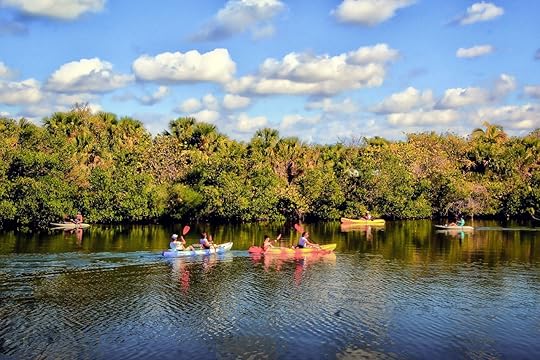
Photo: The Beaches of Fort Myers & Sanibel
Stretching from its two-mile Gulf-front beach to bayside mangroves, Lovers Key occupies the waters of Estero Bay Aquatic Preserve, famous for its dolphin populations, manatees, bald eagles, ospreys, and other coastal birds. The park’s concession rents kayaks, canoes, and paddleboards to explore mangrove shorelines, cast a line for fish, and look for wildlife. Guided tours are available, too.
STAY: At Pink Shell Beach Resort & Marina on Fort Myers Beach, nearly everything happens on the sand — from s’mores to yoga classes. In addition to a complete spa, a pool steps from a beautiful beach, and dining amenities, the resort has kayaks and paddleboards available for guest rental. Because when you’re not on the sand, you should be in the water. 
The post Paddling guide: Where, when, and how to kayak and SUP on The Beaches of Fort Myers & Sanibel appeared first on Matador Network.
September 9, 2020
Green Book reimagining
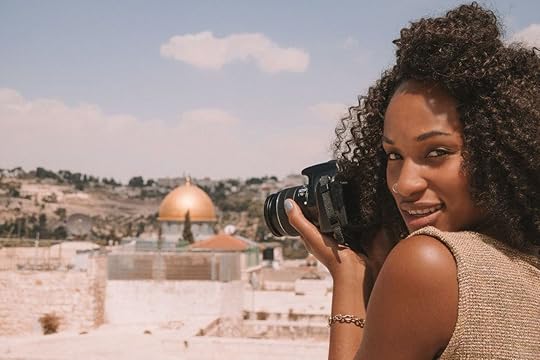
In the 1930s, the great open road in the United States meant freedom along Route 66 or riding through a new town with hopes of adventure just around the corner. But for Black folks traveling during the Jim Crow-era, the great open road wasn’t always great, and often, for us, it was life or death. It meant potentially perilous journeys plagued by the fear of making the wrong turn into a “sundown town” or stopping at a roadside diner just to be refused service.
Enter: The Negro Motorist Green Book. Victor Hugo Green, a Harlem postal worker, spent years throughout the 1930s compiling data on Black-owned businesses. At the time, the country was rife with Jim Crow laws and segregation so many businesses wouldn’t accommodate or serve Black folks. In his 1936 guidebook, Green curated a list of New York City establishments — from restaurants to gas stations — where Black people would be safe to patronize. Soon after, the Green Book rose in popularity and many Black travelers wouldn’t leave the house without it, so Green expanded by adding Black-owned (and Black-friendly) businesses across the nation.
After the Civil Rights Act of 1964 was passed, the Green Book faded out of publication because the legislation was lauded as the end of discrimination in the US. While overt discrimination is now illegal, today, Black Americans still experience anxiety while traveling. We are still routinely profiled, discriminated against, and often, fatally killed at the hands of police and this danger is only heightened while traveling. But as Black travelers, we know that wherever there is a Black-owned business, there is a sense of safety, comfort, and home no matter where we are in the world.
Diversity and travel consultant Martinique Lewis is addressing modern-day Black travelers’ needs with her new book, The ABC Travel Greenbook. On August 28, 2020, she released the guidebook with the aim to connect the African diaspora globally. Lewis’ guide goes beyond the US and lists Black-owned businesses, neighborhoods, and communities safe for Black folks on six continents.
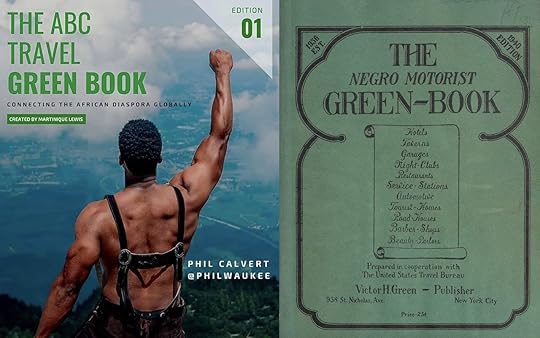
Photo: The ABC Travel Greenbook/The Negro Motorist Green Book
In our interview with Lewis we asked why she was compelled to do this work; she says, “I was traveling and realizing that Black people were really everywhere.” Her travels led her to question why she (and presumably, many others) didn’t know about the Black-owned hostels or Black history tours she was experiencing. Reminding us that Black people are not a monolith, she explains, The ABC Travel Greenbook was designed to highlight the varying beauty of Black culture worldwide — from Atlanta to Accra.
“I’m Panamanian…me being Panamanian is different from somebody being Haitian and it’s different from someone being from Trinidad,” Lewis says. “There are different things we go through even though we all identify as Black.”
Lewis has been working tirelessly in the travel industry for the last four years, and it was during the first Black history month of her travel career that she learned about the original book. Nodding to Green as the reason Black Americans could travel during the Great Migration, Lewis recognized the impact of his legacy. “We should be celebrating Victor Hugo Green like we celebrate Martin Luther King.”
She set out to honor this erased part of Black history by creating this generation’s answer to Black travel — The ABC Travel Greebook. The around-the-world project took two years and it wasn’t an easy journey. Along the way, Lewis had to find ways into new international Black communities, overcome language barriers, and work through the realities of colonialism’s long-standing effects.
“I remember being really discouraged because there’s not a lot of Black-owned businesses in Africa,” Lewis says. It’s her hope that her book will shed a light on the inequalities that Black people still face globally.
The information in this guidebook can not be Googled — Lewis makes that clear. From where to get your hair braided in South Korea to Black expat Facebook groups in dozens of cities, The TABC Travel Greenbook has it. In major cities like London, Black companies are plentiful, but finding us is a bit harder in other parts of the world. In the true spirit of community, it’s Lewis’ hope that when travelers find a new Black business not included in the book, they’ll reach out to her detailing their experience so that the business can be added in forthcoming editions.
Besides the importance of buying Black, Martinique Lewis and Victor Hugo Green both created their guides with non-Black brands in mind, to an extent. Here’s why: Black people’s buying power has long been undervalued. Though Black travelers spend billions annually, large corporations often don’t consider Black folks a necessary target market. With her book, Lewis wants the travel industry at large to realize the buying power of our people and in turn, invest in our communities. Lewis wants to see travel publications and tour operators include Black-owned businesses in their magazines and itineraries, and use the guide as a resource.
As of 2019, Black Americans spent $63 billion on travel, but Lewis urges us to remember that the number is not reflective of the spending power of the entire diaspora. For example, she leans on the example of Black Europeans who typically have more vacation days than Black Americans and who live on a continent where traveling is geographically more accessible. The guidebook was created with the idea of keeping the Black dollar circulating everywhere we travel.
With the media recently looking to amplify Black voices, due to the realities of Black struggles, The ABC Travel Greebook comes at the perfect time. “With the unfortunate death of George Floyd, everyone all of the sudden wants to amplify Black voices,” Lewis says. The guidebook doubles as a tool for holding travel brands and allies accountable for the diversity and inclusivity they’re asking for.
You can, and should, purchase The ABC Travel Greenbook here. 
More like thisBlack TravelHow Black travelers are using travel to create new generational wealth and legacies
The post Why Martinique Lewis reimagined the Green Book for the modern Black traveler appeared first on Matador Network.

TSA Labor Day numbers

Despite the ongoing pandemic, people are showing their increased willingness to travel. With lockdowns lifting and a semblance of normal life slowly returning, TSA just reported a record number of passengers passing through security checkpoints this Labor Day Weekend — the most since March.
The Friday before Labor Day (September 4, 2020), TSA reported 968,673 people moving through TSA checkpoints around the country. It was the first time since March 17 that more than 900,000 passengers had been screened in a single day. Exactly one year ago, however, the number of passengers was 2.2 million, so travel isn’t exactly back to normal yet.
The number of travelers passing through TSA checkpoints declined dramatically in March, with a 51 percent decrease in passengers compared to the same month the previous year. By April, the drop in passengers was at 96 percent compared to April 2019. April 14 saw the fewest number of travelers, with only 87,500 passengers going through TSA checkpoints.
Travelers numbers have been on the rise since May, though the continuation of that trend likely depends on the global health situation and the reopening policies. 
More like thisTechnology + GearWhen Global Entry and TSA PreCheck are worth it, and which to choose
The post TSA saw record numbers of travelers this Labor Day Weekend appeared first on Matador Network.

They say San Francisco is over. We’ve heard that story before.
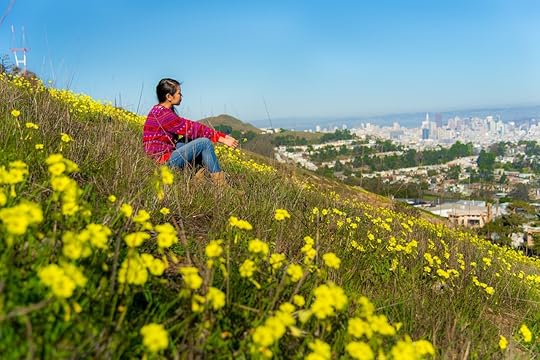
I haven’t wanted to live in San Francisco since high school. Having grown up on the quiet side of the Golden Gate Bridge, I envied the city kids who bused into my suburban prep school during the week and presumably spent weekends sneaking into city bars while I was stuck halfway up Mount Tamalpais waiting to get my learner’s permit.
Visions of the city’s Victorians soon became fantasies of Brooklyn brownstones, or some freshman dorm on the East Coast. I wound up in Boston by way of India and Paris, where I’d split a gap year, and spent the next decade moving everywhere but San Francisco: back to Marin County across the bridge, a stint in Bali, a couple of apartments in Lisbon. Last summer, I spent a month in Amsterdam as a trial run for an indefinite move I’d planned for March.
Then COVID-19 came.
Now, as an exodus of newly remote workers threatens to upend the city, they’re saying San Francisco might be over, and I’m staring down the barrel of an apartment hunt in the one city I said I’d never move to: the one that’s closest to home.
Shortly after Twitter CEO Jack Dorsey announced the company’s permanent remote-work policy in May, an anonymous survey conducted by workplace app Blind revealed that two-thirds of the 4,400 tech workers polled would consider leaving the Bay Area if given the opportunity to work remotely. In the months since, companies from Facebook to Slack to Square, Dorsey’s other venture, have similarly pledged to let employees continue working from home post-pandemic.
By late July, 15 percent of the 3,300 respondents polled in a follow-up survey by Blind had already relocated, permanently or otherwise.
Rent prices are dropping accordingly. According to rental platform Zumper, the median price for a one-bedroom apartment in San Francisco is down 14.1 percent from last year at $3,040, marking the lowest prices since the platform began tracking in 2014. Suddenly desperate for tenants, landlords have begun advertising incentives like weeks, even months, of free rent.
It’s a buyer’s market, too. Active listings have jumped nearly 100 percent since the start of the pandemic, says Danielle Lazier, who has practiced real estate in San Francisco for 18 years. Though the increase follows a period of “historically, drastically” low inventory, Lazier and her colleagues are starting to see condos sell for 2017-18 prices.
“I haven’t seen buying conditions this favorable since the Great Recession,” she tells Matador Network.
Some experts are predicting that the recent movement will prove anomalous. For her part, Lazier, who’s lived in San Francisco for more than 20 years, agrees.
“We’re starting to see folks who had a five-year plan to make their big IPO money and then leave, leave,” she says. “But some [tech workers] love it here and have roots here. They’re raising their families here, and they’re part of our community.”
Outsiders have been flooding and fleeing San Francisco since the Gold Rush. Some stay, seduced by the trappings of a much larger metropolis yet charmed by the city’s small-town feel. Others leave after striking proverbial gold.
This is not the first ebb that’s tested San Francisco’s resilience. By 1849, the influx of prospectors had precipitated an impossible cost of living, even by modern standards: A pair of boots could cost as much as a one-bedroom apartment per today’s prices.
Now, San Francisco is facing an uphill battle against COVID-19, which has only exacerbated the city’s affordable housing and homelessness crises. According to Zumper CEO Anthemos Georgiades, even the plummeting rent is expected to plateau around New York City prices, the second-highest in the country. Though San Francisco will likely remain unattainable for many in the foreseeable future, for the first time in years, the window of opportunity for Bay Areans to reclaim and re-diversify their city has been cracked.
It’s too soon to say if the pandemic will catalyze the San Francisco tech-xodus that’s been predicted for years, but the irony of the suggestion has not been lost in the recent moves: Overpriced apartments, congested streets, and issues of inequity are driving out remote workers who were widely blamed for creating those conditions in the first place.
After college, in 2015, I moved back to Marin County and took an editorial job in SoMa, San Francisco’s tech epicenter, at a 10-year-old company trying to pass as a startup. Like everyone working in the city, I developed a habit of complaining about it.
Some days, the commute from my house, which had always been 20 minutes from the city, took two hours. The lot across from my office, where I parked a hand-me-down car for $15 a day, was flanked by a homeless encampment that was broken up weekly yet steadily grew. Once, during happy hour in the historically Latino Mission District, I overheard a couple of 20-something tech transplants lament the gentrification problem in Oakland over $8 beers.
Yet even then, having never signed an ungodly Russian Hill rent check or witnessed the city’s unraveling through a montage of Muni bus windows, I never fully believed the complaints I parroted. Not wanting to live in San Francisco preserved a version of the city I could want to live in: a post-Summer of Love, pre-Twitter San Francisco that, were you to ask the old hippies who fled to West Marin when the MBAs moved in, was over long before I or any tech bros ever got there.
Before that, it was the hippies themselves who ruined San Francisco. Supposedly.
To say that San Francisco is over is to suggest that the city is static, one thing San Francisco has never been. I should know: I’ve watched it change for nearly 30 years.
In all that time, my relationship to the city has been complicated. Abroad, when someone asks where I’m from, I generally say San Francisco, and it generally feels true. When you grow up close enough to a major city that you can bike there for breakfast and be back by lunch, you identify that city as home. Yet in San Francisco, I’ve never truly felt like a San Franciscan.
Soon, that may be changing, too.
It’s taken me six months to admit that my dream of an Amsterdam canal house is on indefinite hold. I’ll likely still end up an expat, at least for a while, but until then, I know one thing is true: If I’m going to live anywhere in the United States, it’s going to be my San Francisco. 
More like thisSolo TravelI moved to Mexico for a better life during COVID-19. It’s the best decision I’ve made.
The post They say San Francisco is over. We’ve heard that story before. appeared first on Matador Network.

Matador Network's Blog
- Matador Network's profile
- 6 followers



